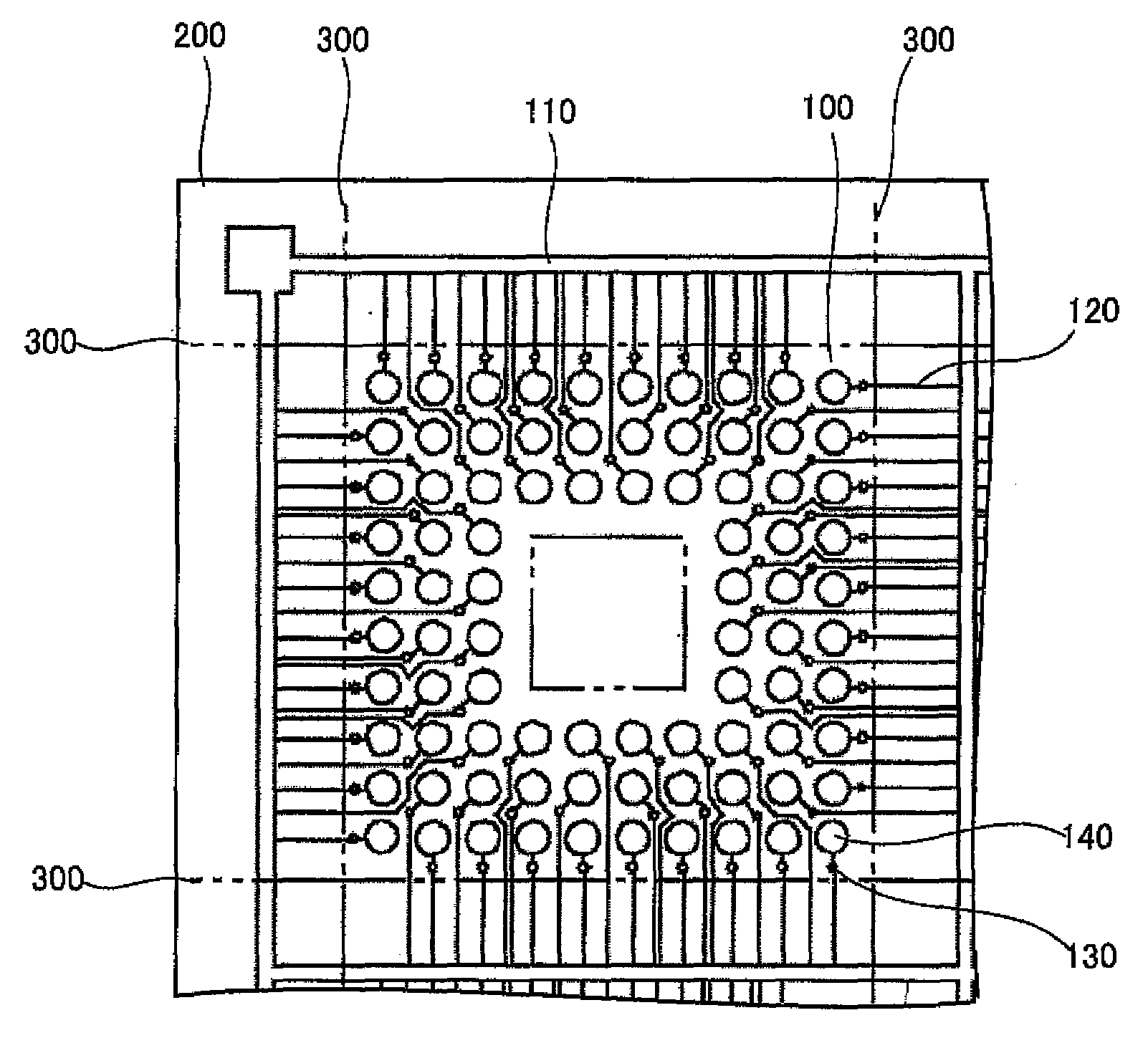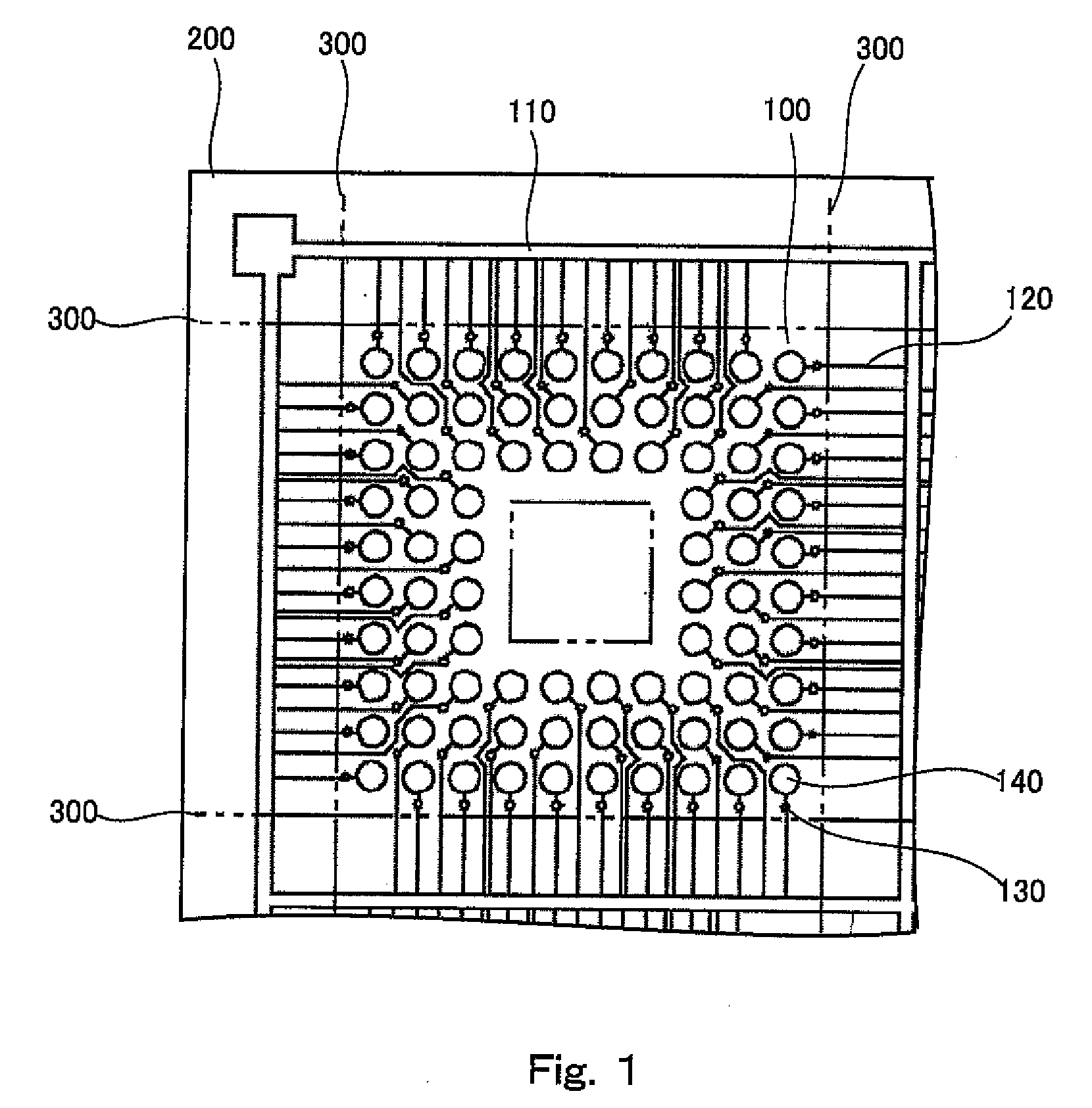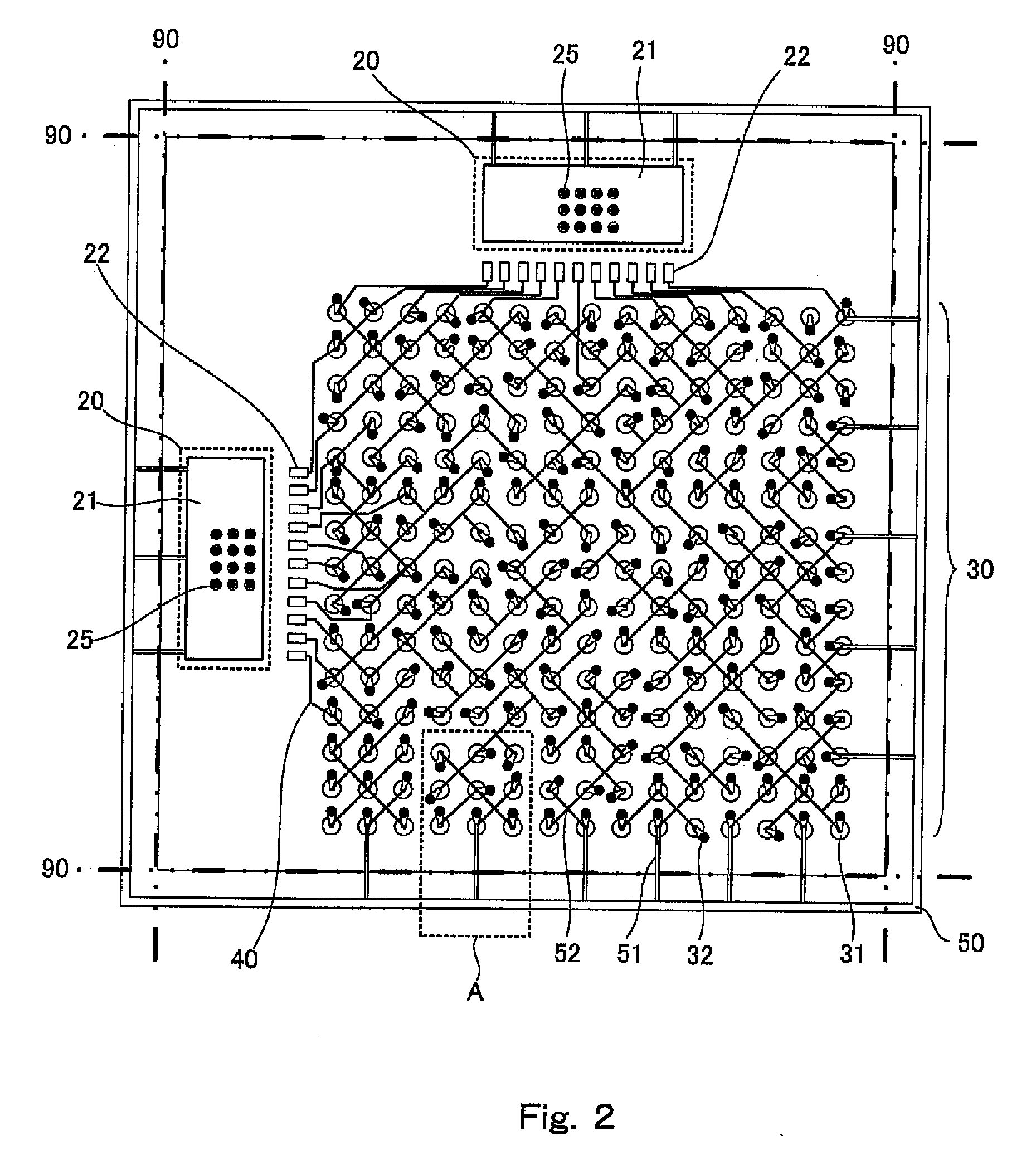Method for manufacturing printed-circuit board
a manufacturing method and printed circuit board technology, applied in the direction of printed circuit manufacturing, printed circuit aspects, printed element electric connection formation, etc., can solve the problems of increasing the number of plating lead wires, difficult to provide adequate space in which the plating lead wires can be arranged, and the number of plating lead wires can be considerably reduced, so as to increase reduce the number of plating lead wires. , the effect of increasing the number of plating lead
- Summary
- Abstract
- Description
- Claims
- Application Information
AI Technical Summary
Benefits of technology
Problems solved by technology
Method used
Image
Examples
Embodiment Construction
[0017]A preferred embodiment of the present invention is described below with reference to the attached drawings. FIG. 2 is a plan view showing the configuration of the obverse surface of the printed circuit board 10 according to an embodiment of the present invention. FIG. 3 is a plan view showing the configuration of the reverse surface according to an embodiment of the present invention. The drawings show a state prior to an Au plating process to be carried out on a variety of pads.
[0018]The printed circuit board 10 may be made of a glass epoxy resin, a paper phenolic resin, a paper epoxy resin, or the like. A chip mounting area 20 in which IC chips are to be mounted and a BGA mounting area 30 in which a BGA package is to be mounted are provided on the obverse surface of the printed circuit board 10. A die pad 21 is provided in the chip mounting area 20, and an IC chip is soldered or otherwise mounted on the die pad 21. The IC chips mounted on the printed circuit board 10 are con...
PUM
| Property | Measurement | Unit |
|---|---|---|
| electroconductive | aaaaa | aaaaa |
| shape | aaaaa | aaaaa |
| separation distance | aaaaa | aaaaa |
Abstract
Description
Claims
Application Information
 Login to View More
Login to View More - R&D
- Intellectual Property
- Life Sciences
- Materials
- Tech Scout
- Unparalleled Data Quality
- Higher Quality Content
- 60% Fewer Hallucinations
Browse by: Latest US Patents, China's latest patents, Technical Efficacy Thesaurus, Application Domain, Technology Topic, Popular Technical Reports.
© 2025 PatSnap. All rights reserved.Legal|Privacy policy|Modern Slavery Act Transparency Statement|Sitemap|About US| Contact US: help@patsnap.com



